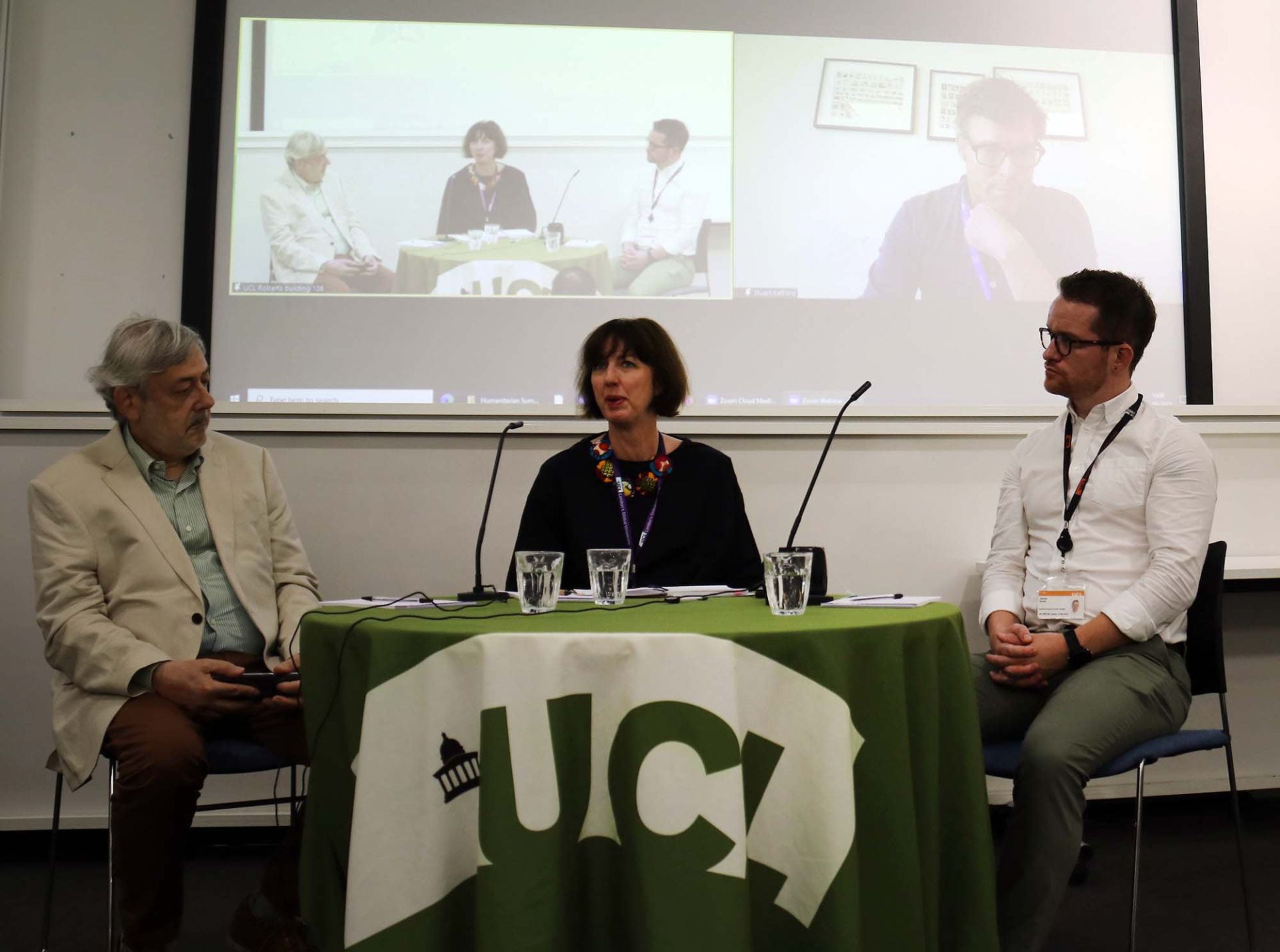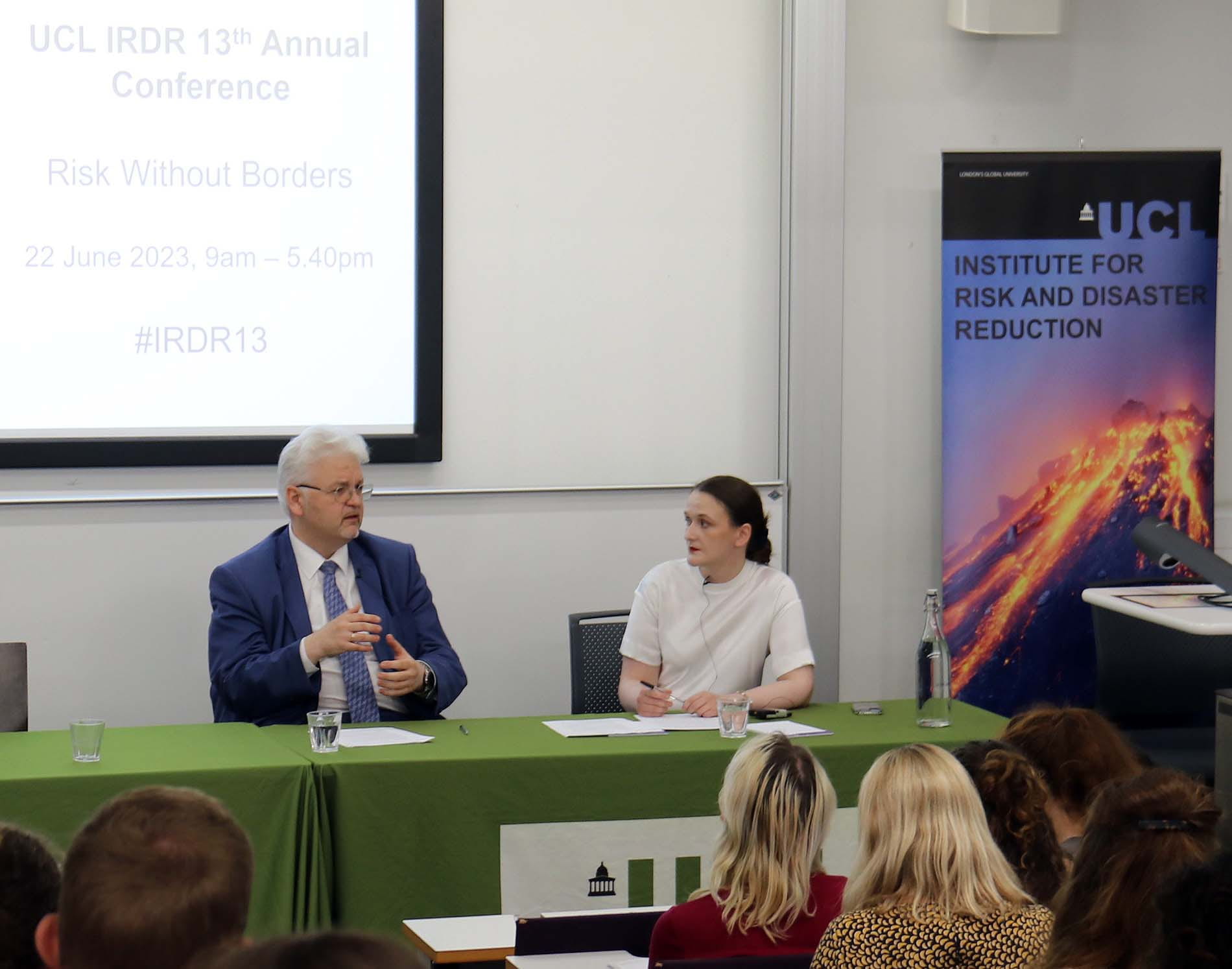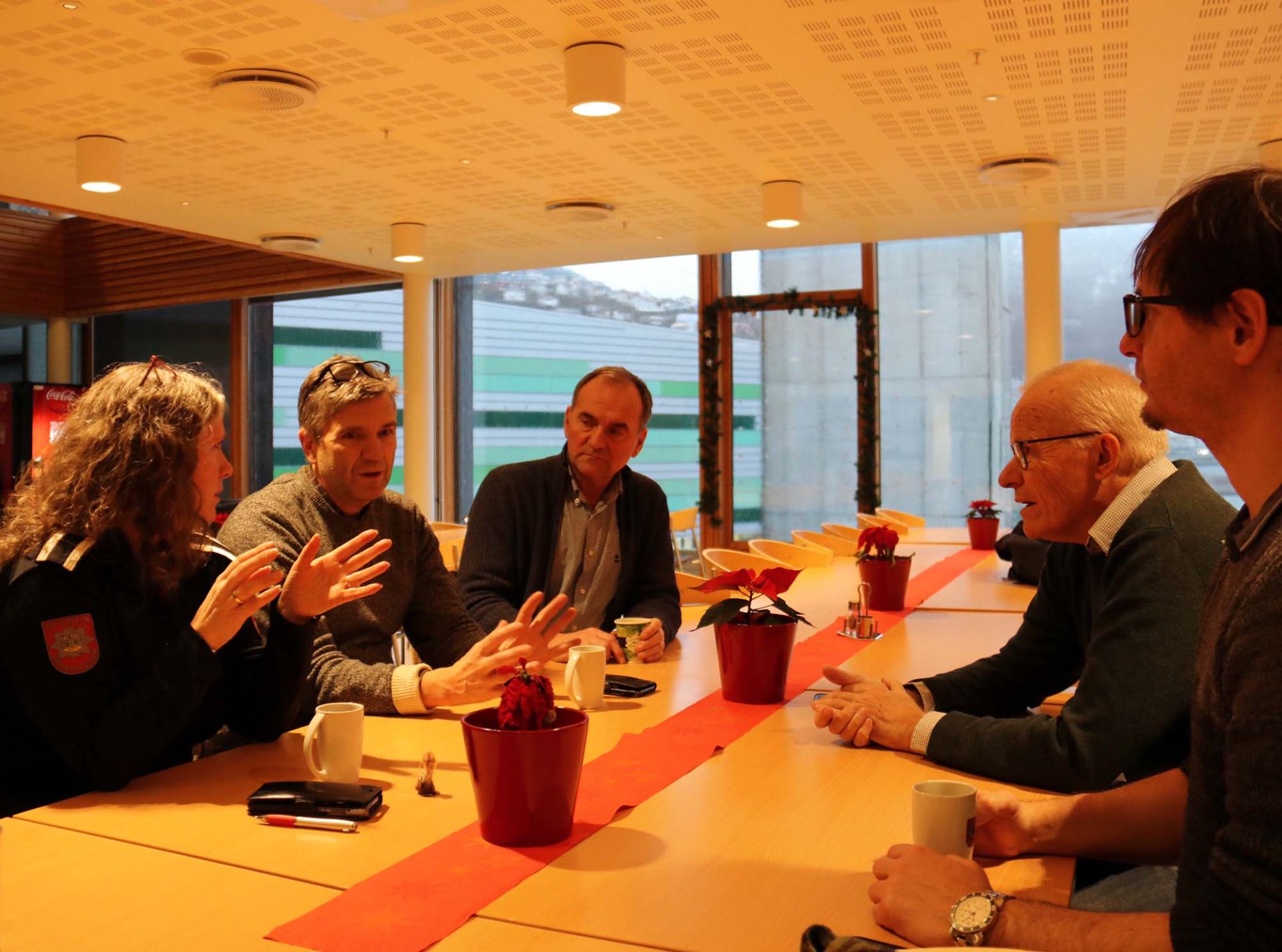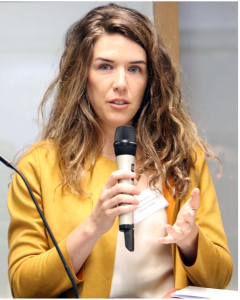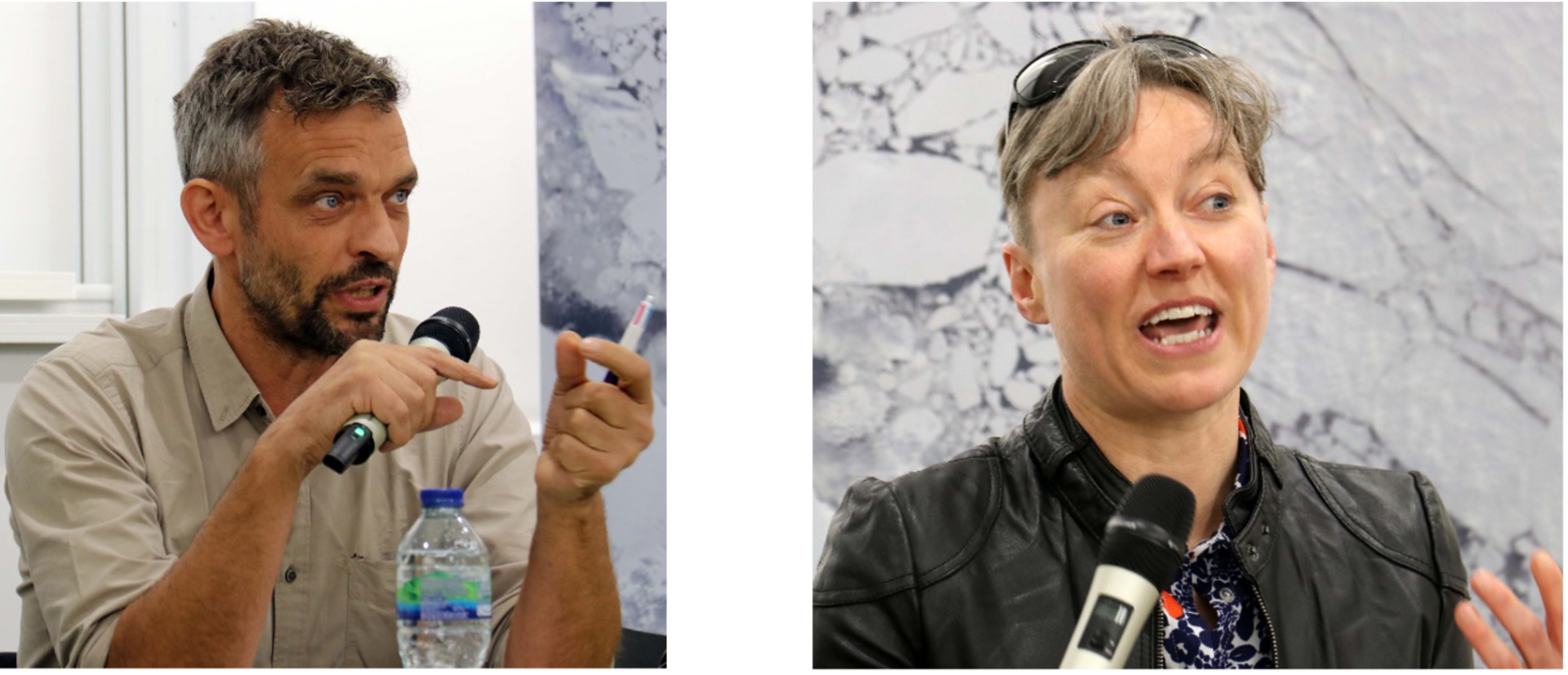The IRDR Annual Conference 2022 is nearly upon us, in which experts will tackle the issue of how global climate change is acting as a threat multiplier, accelerating and intensifying hazard risks, and how we can navigate the future following on from the 26th UN Climate Change Conference of the Parties (COP26) meeting in Glasgow this year.
As we move forward it’s important to maintain the lessons of the past. Lest we forget them; here, we take a look back at the final item from last year’s annual conference, which saw the launch of the UCL Warning Research Centre among expert discussion of Why Warnings Matter.
The rapporteurs whose notes form this material are Calum MacKay and Simone Phillips, who are both from the University of Glasgow on the MSc Earth Futures Programme. Any mistakes or misrepresentation of the participants’ words are the author’s own.
Part 4
Panel Discussion: Warnings for Organizations
Presenters
Catia Guimares, InterContinental Hotels Group
Emily Hough, Crisis Response Journal
Andy Marshall, AstraZeneca
Jeremy Reynolds, London Fire Brigade
Moderator: Dr Gianluca Pescaroli, UCL
What are warnings for you? Based on your experience, are they linked with sustainability?
Andy Marshall
Warnings are split into three levels: strategic, enterprise, and individual. For this question, one can look at the strategic level. COVID-19 showed us that there exists some break in the communication link between those providing warnings and those on the receiving end, which should be the focus of upcoming research. Bad things will happen, and warnings for them will come quickly, so it is important that communication and action are both effective.
Catia Guimares
Realistically thinking, companies need to prioritize their attention, and it can be difficult to determine what a warning is and when it requires attention. However, the indicators of risk are usually visible to those involved, and it is not often that an emerging issue is brought to the table. There is the question of sustainability and viability, or long-term viability of a company, with climate change impacts for example. A warning is essentially a heads up, but warnings are often disregarded as unimportant. Therefore, it is important to know as much as possible about the risks involved and what can be done about them.
Emily Hough
Warnings are indicators of an issue, which if one acts early enough can lead to a crisis being averted or mitigated. They start small, usually as instinctual signs that everything is not quite right, which is why people are at the center of warnings. Any community or organisation’s risk comes down to people and how aware they are of risks. It is unfortunate that good warnings, ones that lead to averting a crisis, are not given the attention they deserve, and people should talk more about the positives. Things like misinformation, trust issues, and the human psyche of clinging to the safe and familiar or wanting to make the world fit their expectations can all play a part in warnings being ignored. Sustainability is enmeshed within this and resilience. People want to thrive and live-in security and peace, and organisations want to continue working as they have been. Everything is interconnected, warnings, people, sustainability, etc.
Jeremy Reynolds
Warnings are formally driven by risk, and we see that by organisations being responsible for specific risks. However, warnings are complicated, and everyone has responsibility in protecting the public, with individual organisations sharing information and helping with communication. It is important that we make sure the public are aware of risks, what their options are and what responders are doing in terms of formal work around EWS and paying attention to informal indicators. Processes are only as good as the people using them, so there is a large human element with responders, as well as public judgement, paying attention and responding by everyone involved. Sustainability is certainly linked to resilience, and they may even be interchangeable in this field. A big challenge now is how to integrate longer-term warnings and response vs. resilience is where a lot of work is being focused now.
Do global warnings exist? What are their limitations and strengths?
Andy
COVID-19 and the WHO are classic global warnings. The issues here were around the flow of information and the efficacy of response to these warnings. Gathering information and being better at collating that on a global level requires more attention. Even at a low level, community-based incidents can overwhelm information systems, meaning this is quite a significant undertaking on a global scale, and turning that information into intelligence as quickly as possible takes a lot of intervention. Responders and crisis managers receiving such information should ask themselves “So what?”, as in what does this mean and what do I need to do about it? Furthermore, experience has a great impact on how individuals and organisations respond to a warning.
Catia
Not sure if global warnings do exist. There are warnings for different parts of the world and global events, but there does not seem to ever be a single warning that goes out to the entire world at the same time for the same level of impact. Even the pandemic snowballed then moved. It was not entirely global to begin with and the exact impact for each region could not be predicted. There is so much information involved in these types of events that intelligence is very important for making decisions based on what is happening at the time. It is human nature to ignore anything that is too complex, and we tend to focus on what is in front of us and of immediate concern. This pandemic was not the big one that had been predicted, so are we better or worse off now that we have this experience? As everything is interconnected, the big risks involve multiple crises, like the social and economic impacts of the pandemic.
Emily
Going back to the definition of warnings, there are lots of signs of impending doom, certainly in the case of COVID-19there were lots of warnings. But maybe we have too many warnings which results in warning fatigue, or them not being listened to or listened to in the right way. Over time, people become comfortable with the situation, even when a warning has been issued. It may initially cause people, responders as well as individuals in the public, to prepare but when nothing happens their alertness decreases, and they become complacent. Each person has their own unique risk fingerprint, made up from their experiences, perception, culture, and understanding which help them to process warnings and filter them into their own intelligence. But trust is difficult to secure when it comes to warnings. Both people and organisations often do not want to be given a warning about something that has not yet happened, so one problem is convincing people that there will be issues and that warnings can help them to become more aware of the risk.
Jeremy
Yes, global warnings do exist but with limited efficacy. Things like climate change or financial disruption to the system and Covid can have massive impacts and need global responses; however, individuals can be overwhelmed by information so they often look to more local/national leaders for guidance on how much attention they should give to these risks. There is a need to assess what the scale of the risk is, its potential impact and how to prioritise it, and perspective as well as context are important to keep in mind. For warnings and alerts, there is a spectrum of recency, or prioritising immediate response instead of big issues and longer term thinking and there is a need to deal with information, and misinformation, to bring out the truth while creating reassurance for the public. And it is difficult to marry immediate action for longer term warnings, like those around climate change for instance.
Are organisations effectively integrating warnings into operational practices?
Andy
No. There is a lot of work for organisations to do with warnings, including learning to get the right information to the right people at the right time with the right understanding. There needs to be more conversation around what they should do with warnings and why they should be a priority among everything else that could impact them. Furthermore, research should be done around organisational behaviour and why individuals do or do not share information that could be perceived as bad news either to their immediate boss or to management above and around them. It seems warnings often get distorted because the message is overly managed. Furthermore, the private sector has a role to play in response to significant risk and their role in collective response to warnings should be recognised.
Catia
Hindsight is 2020. When something happens, companies tend to learn from that pain point. Many companies have restructured due to the pandemic to become more flexible for future proofing, but people also play a huge part in this and the culture of companies needs to change in general. Many look at short and long term issues separately, wanting to know what needs to be handled now and told when future ones require immediate attention. Big issues like climate change and cyber issues cannot be ignored and companies need to start dealing with them now before they become even bigger. Integrating warnings as a way of ‘bouncing back’ is problematic because it implies they have learned nothing, and this experience and warnings should instead be integrated into daily work and culture as a way of improving resilience.
Emily
The topic of not wanting to deliver bad news is an important one, especially since one department’s warning or threat could be an opportunity for another. But you need to recognise them first, identify indicators with seriousness in order to look at both sides of the coin. Some organisations do and some do not. The blackouts in Texas were an example of many obvious warnings about the need to winterise energy production and distribution being ignored. It is about pragmatism and leadership and creating systems in which it is second nature for everyone to look out for the little things that are not quite right, report them and feel confident that those reports will be taken seriously.
Jeremy
Being more willing to report bad news can lead to assessments of what the potential and scale of the risk are and where it sits in terms of priorities. Organisations and societies are complex, so when emergencies and crises happen we should look into if it was due to a failure of warnings or responsiveness to them but while bearing in mind the human aspect of it all. We should identify how we can make sure to respond early enough to contain an issue, or even turn the warning into opportunities to come into a new normal. Public and private sectors should be responding collectively and openly communicating since everyone has a part to play in response to warnings, making it a whole of society approach.
How do we build societal trust in warning systems and how can we be sure that we also reach small and medium enterprises or the humanitarian sector?
Jeremy
Keeping a single point of truth and being clear about what we do not know are important. Responders in the public and private sectors need to work together and ensure that they are not contradicting each other. More work can be done in this arena but locally, regionally, and in central governments, having dialogue with businesses is important because they are part of the community.
Emily
SMEs and microbusinesses tend to be overlooked in response to crises and government planning. However, they also tend to be extremely resilient because they are operating at peak stress all the time and thus require adaptability. They often have to think about the “What if?” question at the center of operations to go along with Andy’s “So what?” question. One size does not fit all for businesses so more creative engagement is needed to make sure everyone’s involved in warnings.
Catia
It is all a learning experience. Instead of putting all responsibility on the public sector, we could lean toward private sector businesses of all sizes sharing resources and working together to make the industry more resilient. One example is how the tourism industry pulled together during the pandemic. People have a lot to share and learn from each other so it would be helpful to focus on that.
Andy Marshall brings around 20 years experience of work in business continuity and wider crisis management and resilience activity in all different forms, military, public and private sector resilience, including five years in business continuity and crisis management with Rolls Royce prior to joining AstraZeneca’s team.
Catia Guimares is the director for global resilience for IHG hotels and resorts and has been with IHG for 10 years. Catia is responsible for crisis management, business continuity, ERM, and strategic resilience, including long term risk management or future proofing future issues from an enterprise perspective.
Emily Hough is the founder and editor of Crisis Response Journal, a publication that looks at all aspects of the disaster and crisis cycle from a multidisciplinary perspective with the goal of bringing forward perspectives that would not traditionally be considered disaster related so that disciplines can learn from one another. There are many areas around disaster and warning mentioned in this conference that need to be explored more. For CRJ, the goal is to stand back and get an overall impression of the whole picture and try to extrapolate possible connections between events, risks, major crises and thereby hope to predict trends and future hazards, through the expertise of an advisory panel.
Jeremy Reynolds works for the London Resilience Group, which is hosted by the London Fire Brigade, which has the role of supporting the work of London Resilience Partnership in preparing and responding to emergencies. That partnership is made up of around 200 organisations and includes category 1 and 2 responders. Jeremy is one of the deputy heads in that team and is responsible for work relating to risk, including being chair to the risk advisory group. Jeremy is also a part-time PhD student at UCL working on organisational resilience and adaptation.
Don’t forget, last time we presented Dr Oliver Morgan and Dr Gail Carson in conversation with Andrew Revkin, discussing global public health in the COVID-19 pandemic.
Watch the full conference on youtube here!
Conference URL:
https://www.ucl.ac.uk/risk-disaster-reduction/events/2021/jun/ucl-irdr-11th-annual-conference-why-warnings-matter-and-ucl-warning-research-centre
Conference Rapporteurs: Simone Phillips and Calum Mackay
Conference Convener: Dr. Carina Fearnley
Please email us for any further information at IRDR-comms@ucl.ac.uk
Or check out our website: https://www.ucl.ac.uk/risk-disaster-reduction/
Institute for Risk and Disaster Reduction (IRDR), University College London (UCL)
Gower Street, London WC1E 6BT, United Kingdom (UK)

 Close
Close


